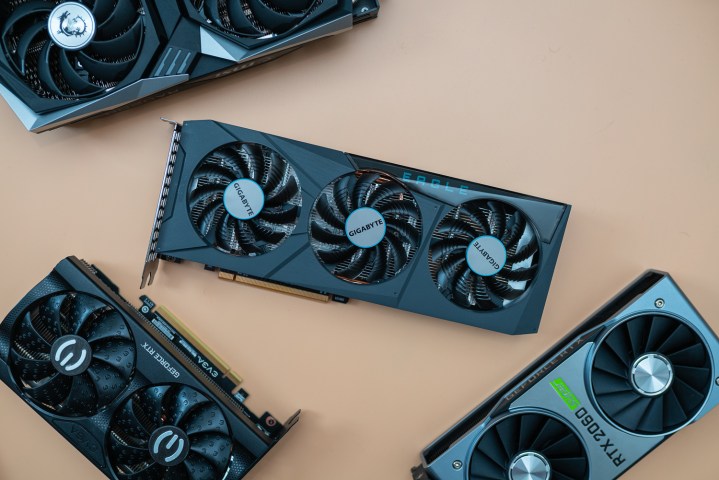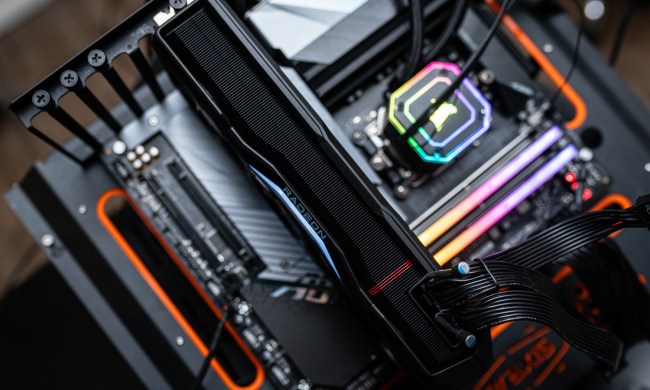The end to the GPU shortage that has seen the prices of cards skyrocket across the board appears to be on the horizon: Prices for graphics cards are continuing to drop, with Nvidia and AMD boards finally edging closer to their manufacturer’s suggested retail price (MSRP).
For the period between January 23 and February 13, GPUs for Nvidia’s GeForce RTX 30-series were priced 57% over MSRP, while cards from AMD’s RX 6000 range were slightly cheaper at 45% over MSRP. The latest report from 3DCenter, which has conveniently documented availability levels and price changes for over a year, has now confirmed even further drops in prices.

From February 13 to March 6, the overall cost for Nvidia’s GeForce RTX 30 graphics cards were 41% over the MSRP, representing a 16% drop compared to late January and early February prices. As for AMD’s Radeon RX 6000 cards, you’ll now have to pay 35% over the MSRP to acquire one, a 10% drop.
As pointed out by VideoCardz, certain GPUs such as the high-end AMD Radeon RX 6800 are still quite expensive (63% over MSRP). But models that are geared toward the entry-level segment are much more affordable. For example, the RX 6500 is only 8% over the retail price ($199). Elsewhere, it’s a similar state of affairs for Team Green graphics cards: The RTX 3060 Ti/RTX 3080 10GB are 55% over MSRP, while Nvidia’s slowest Ampere card sits at 29% over MSRP.
Wccftech provided further insight into prices for other models: The RTX 3080 Ti will cost you 16% over MSRP, while the price for Nvidia’s most recent GPU launch, the GeForce RTX 3050, is 29% over MSRP.
In any case, these drops in prices are a significant improvement compared to prices from last year. During 2021, at the height of the GPU shortage, Nvidia boards cost over 200% of the MSRP, while AMD cards cost over 100% of the normal retail price tag. Nvidia’s products were naturally more expensive due to their popularity among cryptocurrency miners.

Availability for these GPUs, meanwhile, have reached its highest level since January 2021. Cryptocurrency, which has been a major contributor to the shortage and skyrocketing prices, has been in a freefall since the start of 2022 and that trend continued throughout February and the first week of March. In particular, the price for Ethereum has fallen in the past few weeks.
While the drop in prices is certainly encouraging news for an industry that has been severely affected by a shortage for well over a year, you may want to wait just a little while longer before you pay current market rates. Even though prices have reached a level where paying slightly over the MSRP for a given card could be an attractive option for someone who has waited a long time to order a GPU, you should be able to grab one for even cheaper in the coming months, potentially saving you hundreds of dollars in the process.
Another important factor to consider is the impending arrival of next-generation graphics cards from Nvidia, AMD, and even Intel. All these technology giants are preparing to launch upgraded cards later this year.




